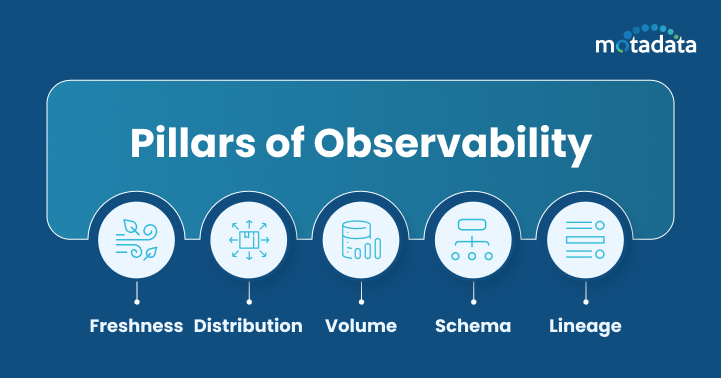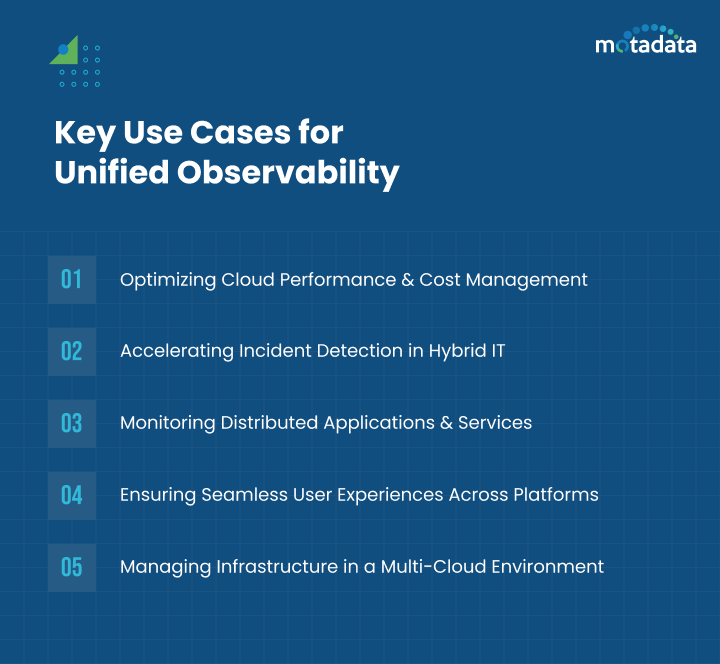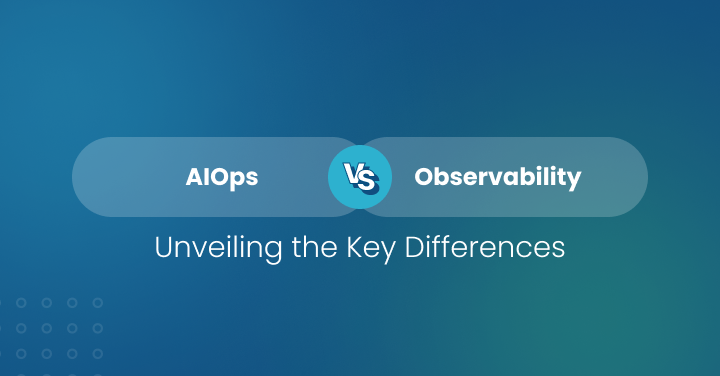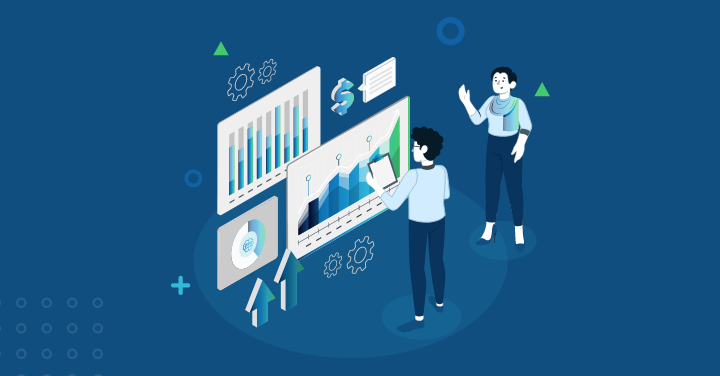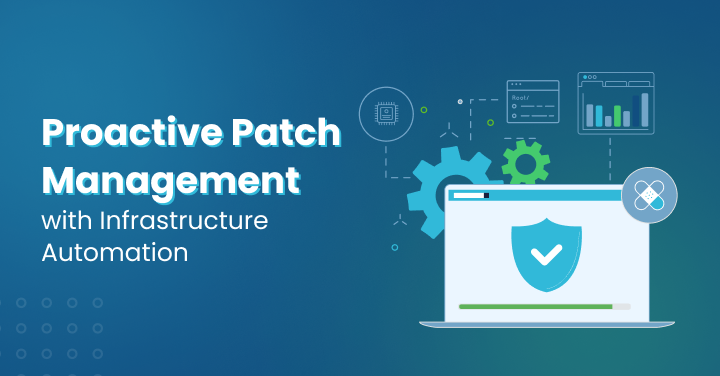Introduction
Misplaced data in a multi-cloud or hybrid IT setup can significantly add to your cloud costs, whether due to increased data egressing fees, over-provisioning resources, or other latency-induced issues.
Keeping track of this data becomes challenging, especially when the total amount of data generated and consumed globally has exceeded 149 zettabytes in 2025.
This is where unified data observability comes in. With an observability solution/platform, you get a centralized view of all your data in a single platform. Let’s explore more in this domain.
What is Unified Observability?
It is an approach to monitor and manage system performance using data (metrics, log data, traces, etc) consolidated in a single platform.
Consequently, in a hybrid IT setup with disparate storage across on-premises systems as well as the cloud, this approach provides a secure way to get a complete view, making it easier to detect issues, optimize performance, and improve decision-making.
The Pillars of Observability
Observability depends on key aspects that work together for overall system health and reliability.
These core elements, often referred to as the “Pillars of Observability,” guarantee real-time data collection, effective application performance monitoring, and a birds-eye view of the entire system.
- Freshness: The first pillar ensures that your data is always current and relevant by tracking its timeliness and accuracy. By allowing your operations team to monitor all the states of a system (internal as well as external), observability detects delays or stale pipelines, which is vital for time-sensitive decision-making.
- Distribution: Understanding the distribution of your data, its range, mean, and standard deviation, is a critical aspect of true observability. With actionable insights into this distribution, you can quickly identify unusual patterns that may indicate potential issues in your systems.
- Volume: The third pillar guarantees your IT infrastructure is built to handle increasing data flow through your systems. This is crucial for those planning for or undergoing a digital transformation, as true observability will help them proceed as per anticipated data volumes.
- Schema: The next pillar of observability concerns the structure of your data, including tables, fields, and data types. Observing this structure is imperative to ensure updates are intentional and compatible with downstream processes, safeguarding functionality across all internal states of a system.
- Lineage: Data lineage is the entire journey of raw data, covering all touchpoints between the data source and the destination. Having this information helps you track transformations and errors, perform business impact analysis, and maintain integrity, especially in complex systems.
Benefits of Unified Observability
Observability is known to drive measurable business value, offering a median annual ROI of 2x. Here is why:
1. Enhancing IT Efficiency and Productivity
Unified observability compiles all your data into a single view, reducing the need to switch between multiple monitoring tools. Instead, use a tool that offers real-time performance insights and internalizes analysis. This saves time and resources spent manually reviewing volumes of data.
2. Streamlining Workflows through Automation
These solutions are designed with efficiency in mind. They integrate automation to handle repetitive and time-consuming tasks like generating alerts, analyzing patterns, and correlating data.
So, instead of separately monitoring and managing different components, your teams can prioritize incidents based on severity and trigger actions for resolution while predefined automation mechanisms do their work.
3. Ensuring Business Continuity and Performance Optimization
Besides allowing you to consistently monitor metrics such as response times and network performance, observability platforms, and tools also offer predictive analytics.
They can forecast performance issues like an impending server overload and recommend proactive measures, keeping your apps operational even during unexpected surges. This ensures business continuity and allows you to optimize performance based on real-time events.
4. Reducing Mean Time to Detection (MTTD) and Resolution (MTTR)
The simultaneous analysis of all system data (logs, metrics, and traces) helps you detect issues faster. With unified observability solutions, your teams can correlate data points, such as unusual spikes in server load or network latency.
This lets them quickly pinpoint the actual cause and the area/location where it occurred, directly improving MTTD and MTTR.
In fact, as per Dimensional Research’s Observability Landscape Report, over 60% of organizations have reduced MTTR with mature solutions.
5. Strengthening Security and Compliance in Hybrid IT
You can also leverage tools to get centralized visibility into all activities across hybrid IT environments, including on-premises, cloud, and multi-cloud systems.
These tools collect data, such as security logs, user access patterns, and system configurations, in real-time, allowing you to spot unauthorized access or other unusual activities.
For compliance, these tools/solutions can also help you identify system configurations that violate regulatory requirements like GDPR, HIPAA, or ISO standards.
You can also schedule automated alerts to notify development teams of non-compliance, such as unencrypted data transfers or misconfigured access controls.
Challenges in Multi-Cloud and Hybrid IT Environments
- Siloed and Fragmented Data: More than 90% of business executives would agree that their data is siloed in a distributed system. Consequently, monitoring tools also operate in silos, leading to incomplete insights. This fragmented view does not give a complete picture of system health and performance.
- Managing Separate Tools and Platforms: Working with siloed monitoring tools results in massive volumes of metrics and logs, which can overwhelm your teams. This diverse data also makes it hard to identify issues precisely. Moreover, you need additional resources and more time to handle such a setup, adding to the overhead. To streamline operations, using an integration platform can centralize data and automate workflows, improving system communication and efficiency.
- Lack of Actionable Insights and Slow Troubleshooting: Without real-time insights into system performance, teams working in a hybrid IT environment struggle to connect events and metrics from different environments.
- Security and Compliance Challenges: Multi-cloud setups often struggle to work through inconsistent security policies across platforms, each with its own security controls and monitoring tools. Moreover, they may have varying compliance requirements, such as GDPR for data in Europe and CCPA in the USA.
- Operational Inefficiencies: Hybrid IT environments are inherently complicated because of interoperability demands, performance and security standards, and countless configurations.
Why is Unified Observability Critical for Multi-Cloud and Hybrid IT?
Getting a flat view of your entire IT infrastructure can bring many benefits, especially in distributed, hybrid IT environments. Let’s see how:
Centralized Visibility across Disparate Systems
In multi-cloud and hybrid IT setups, data is often stored across multiple platforms, creating silos. Unified observability consolidates this data into one view, equipping IT teams to monitor and manage everything from a single dashboard without missing critical insights.
Faster Issue Detection and Root Cause Analysis
With a unified observability tool, your teams can quickly detect anomalies by correlating data from all environments.
This end-to-end perspective enables faster identification of root causes, reducing downtime and ensuring smoother operations across complex infrastructures.
Improved System Performance and Reliability
Observability solutions not only enable IT teams to monitor KPIs but also uncover gray areas that are often overlooked.
These could include intermittent network delays, underutilized resources, or hidden dependencies between services that may degrade performance over time. Using AI-integrated analytics, they identify issues within this data and suggest performance improvements.
Reducing Tool Sprawl and Operational Costs
Multi-cloud setups often utilize multiple monitoring tools, increasing complexity and costs.
However, with unified observability solutions, you can replace the fragmented tools with a single solution that streamlines operations and lowers overall expenses.
Enabling Proactive Incident Management
With automated alerts and notifications on unusual incidents, these solutions allow IT teams to focus on the most critical incidents first.
Moreover, you can also use cloud observability tools to map dependencies between applications and infrastructure, predicting how one issue might cascade through the system.
Key Use Cases for Unified Observability
Many organizations have implemented this approach for the following use cases:
Optimizing Cloud Performance and Cost Management
Many organizations rely on these tools and solutions to track real-time cloud resource utilization.
By gaining insights into this data, they can identify idle resources and over-provisioned instances and see how they affect overall cloud expenditures. In fact, observability solutions can reduce costs by up to 25%.
Accelerating Incident Detection in Hybrid IT
In hybrid IT environments, applications often span across on-premise systems, private clouds, and multiple public cloud platforms.
With an observability solution, you can easily track incidents across all platforms and systems, correlate them for deeper insights, and improve incident response.
Monitoring Distributed Applications and Services
Performance in a distributed application, especially one built on a microservices architecture, relies on communication between multiple services spread across diverse environments.
Unified observability tools are used to get a complete view of how these services interact, identifying bottlenecks like latency in API calls or underperforming services that impact the application as a whole.
Ensuring Seamless User Experiences Across Platforms
Observability solutions are also used to ensure your app delivers a consistent user experience across all platforms.
They monitor user interactions and track application performance across each platform, helping you get a hold of any potential inconsistency.
Managing Infrastructure in a Multi-Cloud Environment
A multi-cloud setup requires you to handle diverse configurations, allocate resources for each, and track performance metrics across different cloud providers separately.
Sophisticated tools simplify this by centralizing monitoring of infrastructure health, resource utilization, and availability in a single platform.
Now that you know what a mature observability solution can do, let’s explore how to implement it effectively.
How to Implement Unified Observability
Follow the steps below to implement this approach in your distributed IT environments.
Assess the State of your Existing Monitoring Process
Before you get started with a solution, it’s crucial to examine your current monitoring state. Start by evaluating the following:
- Inventory of existing tools
- Blind spots or process inefficiencies
- State of your data—storage location, data formats, etc.
Use AI/ML for Smarter Insights and Anomaly Detection
With the ability to process vast amounts of monitoring data, AI and ML technologies complement these solutions by automating tasks like pattern recognition, anomaly detection, and cross-platform data correlation.
For instance, they can establish performance benchmarks and flag deviations in real time, helping IT teams identify potential issues faster.
Moreover, with predictive algorithms, AI/ML integrated tools can help you forecast performance issues and plan ahead of them.
Build a Strategy Aligned with your Business Goals
Implementing a data solution is not a one-off task. It is a rather ongoing and multi-step process that requires careful consideration and a proper strategy.
Follow the steps below to devise an effective strategy that aligns with your long-term goals:
- Identify what you aim to achieve, such as improved application uptime, enhanced cloud observability, or optimized costs.
- Focus on tracking metrics critical to your business, like user response times or infrastructure utilization.
- Fix performance benchmarks to track improvement over time.
- Make sure cross-functional teams, like DevOps and IT, are aligned and trained on the platform.
Key Considerations for Platform Selection
Now that you have done the groundwork, move to platform/tool selection. Keep the following things in mind before deciding on a solution:
- Platform’s Integration Capabilities: Ensure your chosen platform supports integration across all environments (on-premise, cloud, and hybrid IT).
- Scalability Support: Opt for a solution that can scale with your growing IT infrastructure.
- AI/ML Capabilities: Select data platforms that offer sophisticated AI-generated, actionable insights for proactive monitoring.
- Cost and ROI: Evaluate the platform’s cost against potential savings and ROI. Prefer those with flexible engagement models.
Core Features of Unified Observability Platforms
Data observability platforms offer the following features:
End-to-End Visibility Across On-Premise, Cloud, and Hybrid Systems
To provide a holistic view of your overall system, applications, and services, these platforms offer multi-platform integration APIs and service mesh telemetry for secure and hassle-free communications across each.
Real-Time Monitoring and Alerting
For effective monitoring, they support time-series databases for quick data storage and retrieval, threshold-based alerting systems, and notification capabilities for instant communications.
Log Management and Correlation
Observability platforms collect data from sources such as servers, applications, containers, and network devices, centralizing them in one location.
Having a unified view enables you to correlate this data across different systems and services using metadata like timestamps, request IDs, or user sessions.
This allows IT teams to trace the flow of events across the infrastructure, identify root causes, and understand the broader context of issues.
AI and ML-Powered Anomaly Detection and Predictive Analysis
These solutions are also integrated with machine learning frameworks (e.g., TensorFlow, PyTorch) for training anomaly detection models, predictive analytics algorithms, and data pipelines (e.g., Apache Kafka, Apache Spark) for processing large datasets.
Scalability to Handle Large Datasets
As organizations grow and their infrastructures expand across on-premise, cloud, and hybrid environments, their data increases exponentially.
To manage this, observability platforms are designed for distributed storage by ensuring compatibility with solutions like Amazon S3 and high-performance data processing technologies.
How Motadata Observability Helps
Motadata’s solution is not just another off-the-shelf solution; it’s a powerful, reliable, deep learning-based ITOps framework that will change how you manage your IT environment.
Unlike typical AI-integrated tools, their DFIT platform takes this approach further by processing more intricate data, such as multi-layered logs, traces, and system telemetry data.
It will help you uncover hidden dependencies, even in highly distributed systems. For instance, you can identify cascading failures across microservices or predict performance degradation.
This level of proactiveness is a key to managing increasingly distributed and large-scale IT environments.
As observability becomes a crucial factor, now is a good time to act on it and take control of your IT operations.
FAQs:
It is an approach to monitoring and managing your whole IT environment, including cloud, hybrid, and on-premise systems, using a single platform.
IT systems are hosted on several platforms in multi-cloud setups, each with its own tools, configurations, and data storage techniques. Uniform observability centralizes the entire monitoring process by eliminating blind spots and displaying data from multiple cloud environments on a single dashboard. This greatly simplifies the management and troubleshooting of complicated infrastructures.
Data observability solutions provide a single source of truth, enabling teams to uncover and fix issues quickly and accurately. This makes it easier for your IT teams to track down problems and fix them faster, improving system reliability and response times.
To implement a unified observability solution, you should start by evaluating the current state of your monitoring tools and listing the areas lacking proper visibility. Once you have an idea of your existing monitoring situation, find a reliable observability tool or platform. Find one that supports real-time monitoring, integrates with your existing systems, comes with AI/ML algorithms, and fits your budget. Training teams on how to transition to the chosen platform is also essential for effective implementation.
Unified observability tracks system activity, detects unusual system behavior, and provides real-time alerts for potential threats. It also helps ensure compliance by monitoring configurations against regulatory standards and generating audit-ready reports, making it easier to maintain secure and compliant systems.
Managing multiple systems and apps hosted on different platforms can overwhelm your IT teams, particularly if they have to juggle between separate tools for each. However, with a unified data observability tool/platform, they get centralized access and a holistic view of application performance across platforms. This reduces tool sprawl and workload, ultimately enhancing efficiency.



